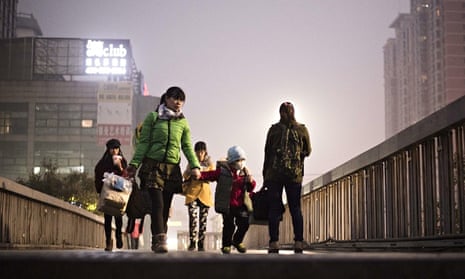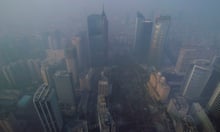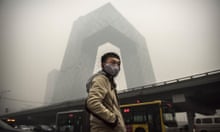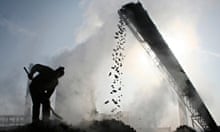Beijing’s mayor, Wang Anshun, has called the city “unliveable” because of its noxious smog, according to state media.
“To establish a first-tier, international, liveable and harmonious city, it is very important to establish a system of standards, and Beijing is currently doing this,” he said last Friday, according to the China Youth Daily newspaper.
“At the present time, however, Beijing is not a liveable city.”
Anshun’s speech came days before the market research company Euromonitor International announced, in its findings on the global tourism market in 2013, that tourism to Beijing had declined by 10% from the year before due to pollution and a countrywide economic slowdown.
The company’s top 100 city destination rankings, released on Tuesday, ranked Hong Kong, Singapore and Bangkok in its top three spots, followed by London and Paris. Beijing ranked 34th, in between Johannesburg and Sofia, Bulgaria.
Wang, a former official in the state-controlled petroleum sector and in north-west China’s Gansu province, said the pollution was caused by its distribution of polluting factories and skyrocketing ownership of motor vehicles. In his speech, he demanded that Beijing’s polluting factories shut down entirely rather than “irresponsibly relocate” to neighbouring areas of Hebei and Tianjin.
In 2014, Beijing authorities closed 392 companies for causing pollution and took 476,000 old vehicles off the roads, Wang said.
He added that despite the choking pollution, Beijing’s biggest problem was population control, claiming the influx of migrant labour put strains on the city’s infrastructure. The city has 21.5 million residents and is growing at a rate of more than 350,000 a year.
In September 2013, China’s cabinet introduced a sweeping anti-pollution plan, which included prohibiting the construction of new coal-fired power plants in Beijing, Shanghai and Guangzhou, the country’s three most important cities.
“This represents the government is strict with science, truth-seeking, responsible for the people and determined to pursue human-centred administration, improve the environment and safeguard people’s health rights,” said the announcement.
Yet 18 months on, the plan appears to be taking slow effect. Beijing is still shrouded by smog on most days. Authorities announced that in 2014, particulate matter 2.5 – pollutants most dangerous to human health – dropped by 4%, falling just short of the government’s 5% reduction target.



